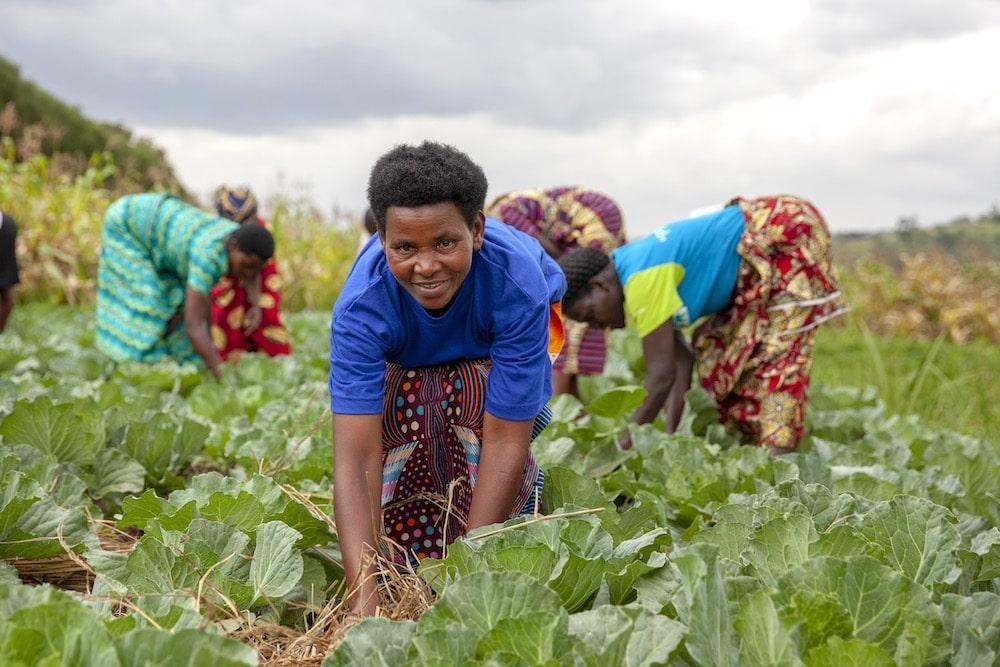Africa-Press – Rwanda. A new labour force survey has shown, among other things, a decreasing trend among Rwandans employed in agriculture, and the correlation between the level of education and occupation in the sector.
The Labour Force Survey Quarter 4, 2024, by the National Institute of Statistics of Rwanda (NISR), was published on January 24. The household-based sample survey collects data on the labour market activities of people aged 14 and above who live in private households in Rwanda. However, only persons aged 16 and above are covered for reporting – as that is the threshold age for Rwanda’s working age population.
In November 2024 – the fourth quarter of the year, which started in October and ended in December, the national labour force comprised 5.4 million people, which included both the employed (around 4.6 million) and unemployed population (789,000).
The unemployment rate stood at 14.7 per cent, indicating that among seven persons in the labour force, almost one person was jobless. This reflects a decrease of 2.1 percentage point compared to the same quarter of 2023, when unemployment rate among Rwandans was 16.8 per cent.
According to NISR, due to the importance of the agriculture sector for the Rwandan economy, particular attention has been given to it in this report. The report indicated that the introduction of the 2013 standards on work, employment and labour underutilisation statistics divided workers in agriculture occupation into two categories: market-oriented workers who are considered as employed, and non-market-oriented workers who are considered not employed.
Here are four key findings about Rwanda’s agriculture labour force:
1. Share of workers in market-oriented agriculture and subsistence farming
The survey covered three categories of agricultural workers: those who worked exclusively in market-oriented agriculture for pay or as self-employed individual, those only engaged in subsistence agriculture, and those whose primary occupation was outside of agriculture but who performed activities related to the production of food for their own consumption.
Its findings showed that in the fourth quarter of 2024, 55.2 per cent – or more than 4.6 million – of the working age population, were involved in agriculture activities, which is an increase of 1.3 percentage points compared to the fourth quarter of 2023 (53.9 per cent).
The share of persons who exclusively participated in subsistence agriculture decreased by 4.2 percentage points to 41.2 per cent, from 45.4 per cent, while the share of those involved in market-oriented agriculture decreased by 2.1 percentage points to 40.7 per cent compared to 42.8 per cent in the fourth quarter of 2023.
Also, the survey showed that 18.1 per cent of the working age population participated in subsistence agriculture in the fourth quarter of 2024, but had main jobs in non-agriculture sectors, which implies a decrease of 6.6 percentage points compared to the 11.5 per cent rate in the 2023 period.
2. Majority women in subsistence farming, men dominate market-oriented agriculture
The survey results show that a majority of agricultural workers were involved in subsistence agriculture with the higher proportion being among female farmers than males. In the fourth quarter of 2024, the share of agricultural workers engaged in subsistence farming was 50.3 per cent, representing a decrease of 1.2 percentage points compared to 51.5 per cent in the fourth quarter of 2023.
Regarding gender, 56.4 per cent of male farmers were engaged in market-oriented agriculture in quarter four of 2024, a proportion higher than that of females involved in the same activity (45.3 per cent). However, the rate of female farmers engaged in subsistence agriculture was higher (54.7 per cent) than that of male farmers (43.6 per cent).
The results reveal that the engagement of male farmers in market-oriented agriculture remained relatively stable. It went up by 0.7 percentage points to 56.4 per cent in the fourth quarter of 2024, from 55.7 per cent in the same period of 2023; while it increased by 2 percentage points among female farmers, to 45.3 per cent from 43.3 per cent in the same period under review.
3. Majority workers have no primary education
The survey found that 59.2 per cent of workers in agriculture did not have any formal education level, 31.3 per cent did primary education, 5.2 per cent had lower secondary, 3.9 per cent have upper secondary education, and 0.4 per cent with university education.
Regarding market-oriented agriculture, people with university education account for 2.7 per cent of the workers in this area, despite their very modest share of 0.4 per cent of the total number workers.
People with lower level of educational attainment are more likely to join agricultural work compared to those with higher level of education, the report observed.
4. Drop in share of agriculture in total workforce
The total workforce is defined as the sum of all individuals engaged in paid or profit-oriented employment [in market-oriented agriculture] and those working in subsistence agriculture. Therefore, the share of agriculture workers in the total workforce refers to the proportion of individuals employed in agriculture relative to the entire workforce, the survey report specified.
The proportion of agricultural workers in the workforce for the fourth quarter of 2024 was 58.4 per cent, which is a decrease of 5.5 per centage points from 63.9 per cent in the same quarter of the previous year.
The share was significantly higher among females, with 68.5 per cent of women working in agriculture in the fourth quarter of 2024, compared to 47.6 per cent of men. When compared to the same quarter in 2023, there has been a remarkable decrease in the proportion of agricultural workers with 7.7 percentage point among males (from 55.3 per cent) and 3.5 percentage points among females (from 72 per cent).
For More News And Analysis About Rwanda Follow Africa-Press






